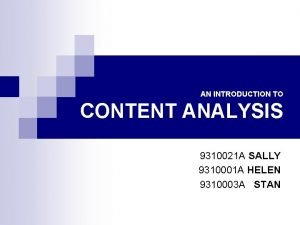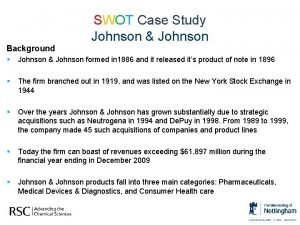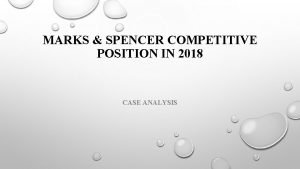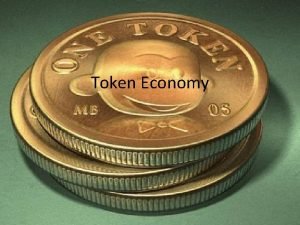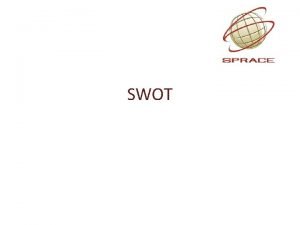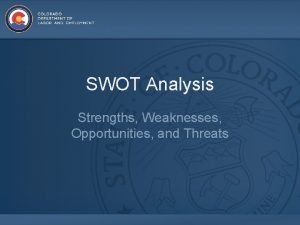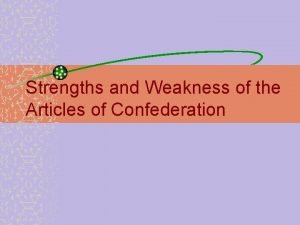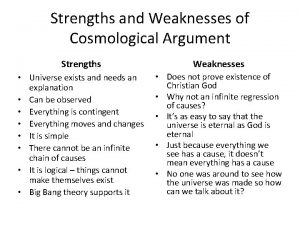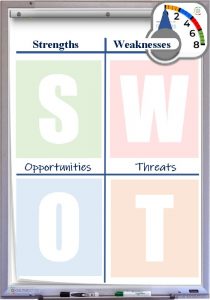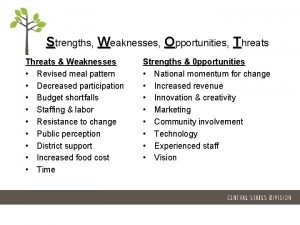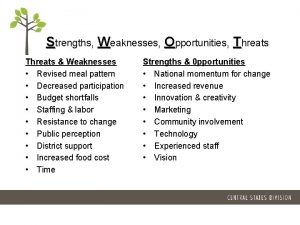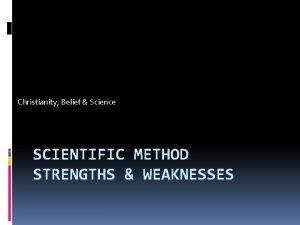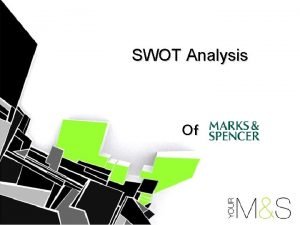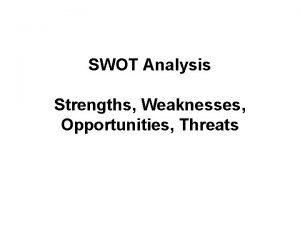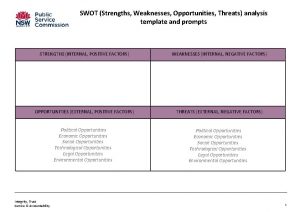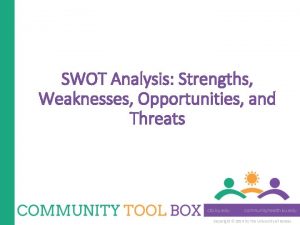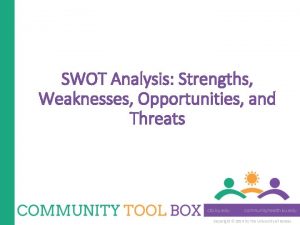A Comparative Analysis of Strengths and Weaknesses of




















- Slides: 20

A Comparative Analysis of Strengths and Weaknesses of European, Japanese, and US Fuel Cell Programs Tohoku University New Industry Creation Hatchery Center (NICHe) 1 July 2013 Noriko Behling

Why is Comparative Analysis Valuable? �An important tool for identifying shortfalls that are common across national boundaries �Examples of success can be incorporated into Government and Private Sector planning �Helps to keep policy and investment strategies ontrack �Potential for identifying who will be most successful in overcoming fuel cell challenges Copyright 2013 by Noriko Behling

Many Factors Contributing to Competitive Positions �Originality and Historical Inventiveness �Size of R&D budgets � Government budget � Industry investment �Policy orientation toward originality, ingenuity, and breakthroughs �Consistency in government’s policy and program �Soundness of program evaluations �Robustness of industry �Vitality in patenting activities Copyright 2013 by Noriko Behling

Originality and Historical Inventiveness Europe Fuel Cell William Grove invented the first fuel cell AFC Invented and developed the first AFC Japan PAFC United States Commercialized the first AFC for space Developed and commercialized the first PAFC MCFC Operated the first MCFC Developed the first commercial MCFC SOFC Discovered the first SOFC Developed the first modern SOFC PEMFC Invented the first PEMFC Copyright 2013 by Noriko Behling

Size of Japanese and US Government Fuel Cell R&D Budgets 400 Japan 350 (Total = ¥ 339. 3 billion or $3. 4 billion) (Hundred Million 300 250 200 150 100 50 0 Japanese Fuel Cell Budget United States 1995 51 1996 58 1997 55 1998 47 1999 43 2000 94 2001 117 2002 220 2003 307 2004 329 1995 1996 1997 1998 1999 2000 2001 47 53 50 40 44 43 51 2002 76 57 2003 92 62 2004 144 67 2005 354 2006 340 2007 306 2008 289 2009 230 2010 175 2011 169 2012 209 300 250 (Total = $2. 54 billion, less $133 million in earmarks, or $2. 4 billion) (Million $) 200 150 100 50 0 DOE/EERE Fuel Cell Budget DOE/Fossil Fuel Cell Budget Copyright 2013 by Noriko Behling 2005 167 75 2006 153 60 2007 190 62 2008 206 54 2009 196 56 2010 170 49 2011 96 49 2012 104 25

Major Government Fuel Cell R&D Budgets: Japan, the United States, and Europe (Continued) (Million €) 1000 Europe 900 (Total = € 2. 038 billion between 1990 and 2013, € 1. 8106 billion or $2. 4 billion) from 1995 thru 2012) 800 700 600 500 400 300 200 100 0 Member State Funding FP 3 (19901994) 32 32 FP 4 (19941998) 58 58 FP 5 (19982002) 145 FP 6 (20022006) 314 FP 7 (20062013) 470 The fuel cell R&D budget here includes only that of the primary agency’s fuel cell and hydrogen R&D. For example, the US budget includes only the DOE fuel cell budget and not the Department of Defense or the Department of Commerce. Copyright 2013 by Noriko Behling

Global Private Sector Fuel Cell R&D Investment: Japan, United States, and Europe Japanese Private-Sector Fuel Cell R&D Investment amounts to at least $6. 8 billion, 1995 -2012, Europe $4. 8 billion, and the US $2. 4 billion. 8 7 6 5 ($ billion) 4 3 2 1 0 Private-Sector Investment Japan 6. 8 Copyright 2013 by Noriko Behling United States 2. 4 Europe 4. 8

Size of Government and Industry Fuel Cell R&D Investment: Europe, Japan, and the United States Combined Public and Private-Sector Fuel Cell R&D Investment exceeded $22 billion, estimated for 1995 -2012 Japan = $10. 2 billion; US = $4. 8 billion; Europe = $7. 2 billion 12 10 ($ billion) 8 6 4 2 0 Private-Sector Investment Government Budget Japan 6. 8 3. 4 Copyright 2013 by Noriko Behling United States 2. 4 Europe 4. 8 2. 4

Orientation toward originality, ingenuity, and breakthrough Europe Japan United States Program Large and encompassing Projects Several large unrelated projects Several large related projects Multitude of small unrelated projects Period of Project Several years; typically four years Several years; Typically one typically five years year, renewable each year on merit Project goal Undemanding; expected to educate participants Demanding; designed to encourage breakthroughs Undemanding; expected to be achievable in one year Project Renewability Not renewable Renewable by year on merit Copyright 2013 by Noriko Behling

Consistency in Policy and Program Japanese fuel cell policies and programs are more consistent and stable that the European and US counterparts. � The Japanese policies and programs are governed by the Basic Science and Technology Law initially implemented in 1995 and the subsequent related laws. � In 2001, the Japanese cabinet adopted the law that placed a high priority on fuel cell R&D in Japan’s S&T policy. This has ensured a steady, high level of funding throughout the subsequent years. � The Japanese administrative structure for fuel cell programs is also well-thought -out and balanced: the METI career bureaucracy supported by the NEDO program managers and the AIST research base. � Moreover, Japan is highly motivated to succeed in fuel cell development. It lacks natural resources, is dependent on foreign oil, and is in need of new industries for economic growth. Copyright 2013 by Noriko Behling

Consistency in Policy and Program (Continued) The European fuel cell policies and programs have been often inconsistent and fragmented. �The EU has worked to improve its fuel cell policies and programs and raise funding levels. Because of its massive, complex political structure, it has taken many years to make a change. �Europe has duplicative fuel cell programs, the EU Framework Project and individual country programs. Moreover, each country has different interest in types of fuel cells and use of fuel cells. There is no integrated European fuel cell policy. Copyright 2013 by Noriko Behling

Consistency in Policy and Program (Continued) The US fuel cell policies and programs are often inconsistent and fragmented. � US fuel cell policies and programs have changed when the administration changed. � The US has duplicative fuel cell programs. Two fuel cell programs have been implemented under two different budgets in two different DOE components. They are not coordinated, separately managed, and in no way associated. � The lack of consistent, long-term, unified focus by the government discourages industry from making long-term commitment in R&D and investments. The termination of one program means a gap in the national fuel cell R&D needs. Copyright 2013 by Noriko Behling

Soundness of Program Evaluation �Europe encourages critical and objective evaluations that have promoted a number of significant policy and program changes. �Major EC FP programs are evaluated by reliable contractors or a panel of prominent EU policymakers and specialists. �The evaluations are objective, critical, and valuable. They have a global perspective and compare the status and the level of European achievements with those of foreign counterparts. The reviewing comments delve into the reasons for failures and explore future actions and solutions. Copyright 2013 by Noriko Behling

Soundness of Project Evaluation Japan encourages critical and objective evaluations that results in major changes in policies and programs. � A project is evaluated by a panel of reviewers after the end of the project (typically five years) with one or two interim periods. The panel consists of a dozen prominent participants. The evaluation is conducted through elaborate process over a lengthy period of time. � The final reports typically carry significant recommendations. They are authoritative and influential and trigger pioneering R&D policies and programs. The US prefers restricted and controlled evaluations and that maintains the status quo. � Small projects are reviewed by a few peers following a brief project presentation. Because of a large number of small projects, the assessment is hurried, cursory, and inconsequential. � The major program itself is reviewed by a respected entity, the National Research Council of the National Academy of Sciences. It is done under a DOE contract, however. The evaluation is comprehensive but lacks critical evaluation and worthy recommendations. Copyright 2013 by Noriko Behling

Robustness of Industry AFC Origin Europe Japan US 1939, Bacon, UK Siemens, Varta, Alsthom, CGE, IFP, Elenco, ASEA. Fuji, Hitachi, Japan Storage Battery, Sanyo, and Matsushita Electric Industrial (now Panasonic) Allis Chalmers, Union Carbide, UTC In late 1980 s all dropped out. In 2006, AFC Energy began AFC development demonstration. PAFC 1960 s, Elmore and Tanner, US Few European companies engaged in PAFC R&D. In late 1980 s all dropped out. In 2007, Daihatsu began R&D on a hydrazine AFC van. Fuji Electric, Hitachi, Mitsubishi Electric, Toshiba, and Sanyo Electric 1959 UTC licensed Bacon; used for space applications About 1970 AFC R. &D ended or froze. Engelhard, ERC (Energy Research Corporation), UTC, and WH 1993 UTC launched product 1996 Fuji launched product MCFC 1950 s, Broers and Ketelaar, the Netherlands ECN, Ansaldo Ricerche, MBB (CFC Solutions) In 2010, CFC Solutions ended its business. SOFC PEMFC 1899, Nernst, Germany 1955, Grubb And Niedrach, US Fuji Electric, Hitachi, IHI, Hitachi, Mitsubishi Electric, Sanyo Electric, and Toshiba 2005 IHI introduced product but did not pursue effort Fuel. Cell Energy (FCE), GE, M-C Power, and UTC 2003 FCE launched commercialization. A smaller number of companies and organizations A large greater number of companies and organizations A number of companies and organizations H. C. Starck/Staxera/ Webasto (Enerday) launched commercial products. Today, two SOFC developers market CHP units. Today, more than three SOFC developers launched their products. A number of companies and organizations Nuvera, Proton Motor, Heliocentris, and SFC Energy launched commercial products. Today, three PEMFC developer s launched CHP products Today, some launched products to power forklifts, backup power, fuel cell vehicle power extenders. Copyright 2013 by Noriko Behling

Vitality in Patenting Activities: Number of Patents Per Country 2000 -2011 1200 1000 800 600 400 2005 2010 2011 Japan 62 243 617 1040 USA 188 359 598 841 Germany 82 91 187 285 South Korea 4 13 177 240 France 4 6 45 72 Canada 21 75 32 47 UK 12 18 30 46 Taiwan 0 6 30 30 Italy 9 10 18 28 The table is created based on the information from "The 2011 Fuel Cell Patent Review" and "The 2012 Fuel Cell Patent Review, " 2011 and 2012. Copyright 2013 by Noriko Behling

Top Ten Assignees of Fuel Cell Patents Granted: 2000 -2011 The 2000, 2005, and 2010 data are based on “The 2011 Fuel Cell Patent Review, ” http: //www. fuelcelltoday. com/media/948977/2011 -fuel-cell-patent-review. pdf , Fuel Cell Today, 2011. * In the 2000 table, De Nora and Toyota each had 7 patents granted and both ranked 10 th. The 2011 data is from “The 2012 Fuel Cell Patent Review, ” http: //www. fuelcelltoday. com/analysis/patents/2012 -fuel-cell-patent-review , Fuel Cell Today, 2012. Some uncertainties involve the ranking of UTC Power and Delphi and their patent numbers. Copyright 2013 by Noriko Behling

Ten Assignees of Fuel Cell Patents Granted by Geographical Region of Origin: 2000 -2011 700 600 500 400 300 200 100 0 2005 2010 2011 Japan 17 138 396 620 United States 81 119 154 229 The figure is based on the previous slide. Copyright 2013 by Noriko Behling Europe 27 0 0 32 Others 19 48 140 192

Summing Up : Japan is Global Fuel Cell Leader Today Europe Originality and Historical inventiveness Size of Government and Private-Sector R&D Investment Orientation toward Breakthroughs Consistency in Policy and Program Soundness of Program Evaluation Resiliency of Industry Patenting Activities Copyright 2013 by Noriko Behling Japan United States

Thank you! Noriko Behling 703 -893 -1569 behlingn@msn. com www. norikobehling. com Copyright 2013 by Noriko Behling
 Advantages of content analysis
Advantages of content analysis Johnson and johnson background
Johnson and johnson background Marks and spencer competitors analysis
Marks and spencer competitors analysis American and british strengths and weaknesses
American and british strengths and weaknesses Strengths of the confederacy
Strengths of the confederacy North and south strengths and weaknesses chart
North and south strengths and weaknesses chart Glanzer and cunitz strengths and weaknesses
Glanzer and cunitz strengths and weaknesses Mbti strengths and weaknesses
Mbti strengths and weaknesses Taba 1962
Taba 1962 Selpa ventura
Selpa ventura Strengths and weaknesses of token economy
Strengths and weaknesses of token economy Strengths and weaknesses of the articles of confederation
Strengths and weaknesses of the articles of confederation Teacher input examples
Teacher input examples Cos swot analysis
Cos swot analysis 3 strengths and weaknesses
3 strengths and weaknesses Marketing manager strengths and weaknesses
Marketing manager strengths and weaknesses Strengths and weaknesses examples
Strengths and weaknesses examples What's zeus weakness
What's zeus weakness Georgia constitution of 1777
Georgia constitution of 1777 Articles of confederation weaknesses and strengths
Articles of confederation weaknesses and strengths Plaafp strengths and weaknesses examples
Plaafp strengths and weaknesses examples
